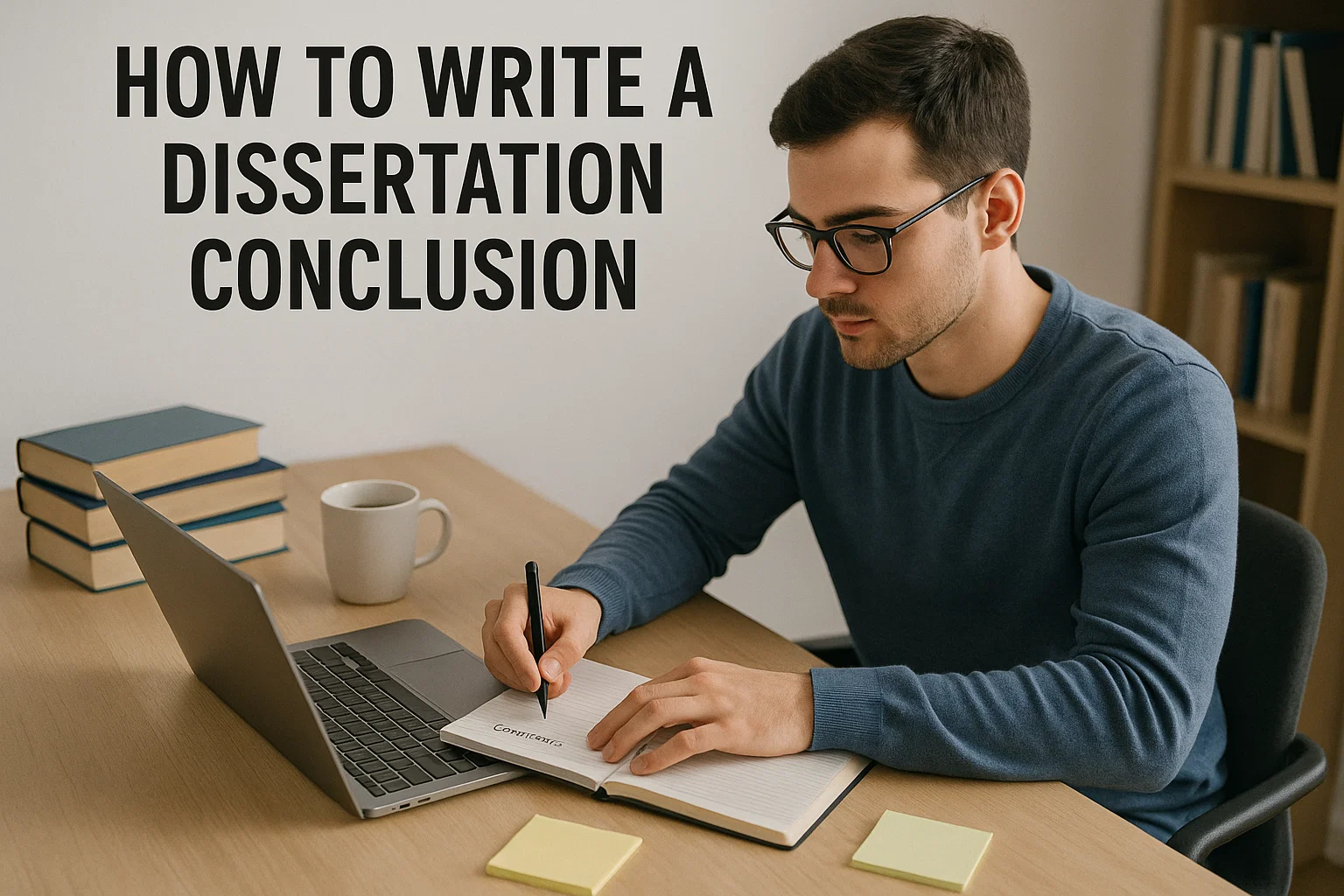The conclusion is your final word, the part examiners remember when they close the file. It’s not just a summary, it’s your chance to remind the reader why your work matters. Let’s break it down step by step so you can nail it.
Why the Dissertation Conclusion Matters
Think of your dissertation like a marathon. You wouldn’t sprint 25 miles, then just wander off before the finish line. The conclusion is that last mile, it ties everything together and shows you’ve crossed successfully.
A strong conclusion does three things:
Summarises your findings clearly without repeating your whole dissertation.
Shows significance, answering the “so what?” question.
Leaves an impression, making your work memorable.
Examiners want to see that you can step back from the detail and explain what it all means in the bigger picture. Weak conclusions, on the other hand, leave your research hanging or feel like an afterthought.
How Long Should a Conclusion Be for a Dissertation?
There’s no one-size-fits-all, but here’s a good rule of thumb:
Master’s dissertation: around 5–7% of total word count.
PhD dissertation: closer to 7–10% of total word count.
So if your dissertation is 15,000 words, the conclusion should be roughly 750–1,200 words. For a 70,000-word PhD, it might be 5,000–7,000 words.
The key? Long enough to cover your main findings, significance, and recommendations, but not so long it feels like you’re rewriting the dissertation.
Key Elements of a Strong Conclusion
A dissertation conclusion isn’t just “chapter recap”. It’s structured, purposeful, and confident. Here are the essential ingredients:
Restate your research question or aim – Keep it short but remind the reader what you set out to do.
Summarise key findings – Highlight the most important results, not every detail.
Discuss implications – Why do your findings matter for your field, theory, or practice?
Acknowledge limitations – Briefly show awareness of constraints without undermining your work.
Offer recommendations – Suggest future research or practical applications.
Finish with a strong closing statement – A clear, confident takeaway.
How To Write a Dissertation Conclusion Step by Step
Let’s break it down so you can write one that works.
Step 1: Revisit Your Research Aims
Start by clearly restating your research question and aims. Keep it concise, you don’t need to rewrite the whole introduction.
Example:
“This study set out to investigate the impact of social media engagement on small business growth in the UK.”
Step 2: Summarise the Main Findings
Highlight your most significant findings, linked back to your objectives. Avoid adding new data here, stick to what’s already in the main chapters.
Example:
“The results show that consistent engagement with audiences on Instagram increased customer loyalty by 35%, highlighting the platform’s importance in SME growth strategies.”
Step 3: Explain the Implications
Now step back. Why do your results matter? Who benefits? What contribution have you made to theory, practice, or policy?
Example:
“This suggests that SMEs should view social media not only as a marketing tool but as a long-term relationship-building platform.”
Step 4: Mention Limitations (Briefly)
All research has limits, time, budget, data scope. Acknowledge them, but don’t overplay.
Example:
“While this study focused on UK-based SMEs, further research could explore similar dynamics in international markets.”
Step 5: Offer Recommendations
If relevant, suggest next steps for researchers or practitioners.
Example:
“Future studies could compare different social media platforms, while SMEs could benefit from targeted training on digital brand storytelling.”
Step 6: End with a Strong Statement
Finish with a bold, memorable line. Something that shows confidence and value.
Example:
“By proving that consistent digital engagement drives measurable growth, this study reinforces the role of social media as a cornerstone of modern business strategy.”
Good vs Weak Conclusion Examples
Sometimes it helps to see the difference side by side.
| Weak Conclusion | Strong Conclusion |
|---|---|
| “In conclusion, this dissertation has looked at SMEs and social media. There were some results and it shows things are important.” | “This dissertation demonstrated that Instagram engagement significantly enhances SME growth, contributing to both academic understanding and practical business strategy. While limited to UK SMEs, the findings provide a foundation for wider comparative studies and practical training initiatives.” |
The strong example is specific, confident, and future-focused. The weak one is vague and forgettable.
Common Mistakes to Avoid
Repeating the whole dissertation. A summary isn’t copy-paste; it’s selection and synthesis.
Adding new data. Don’t sneak in extra results, everything should already be in the main chapters.
Being too vague. Avoid phrases like “this shows things are important” without saying what or why.
Ignoring limitations. Examiners respect honesty; they spot over-confidence instantly.
Ending abruptly. Always finish with a strong closing line.
Tips to Make Your Conclusion Stand Out
Want to move from decent to outstanding? Try these tricks:
Mirror your introduction. Tie back to your opening to create a sense of closure.
Use clear, confident language. Avoid hedging like “maybe” or “sort of.”
Think about your reader. They’ve just read thousands of words. Keep your conclusion smooth, not heavy.
Check flow. Each paragraph should lead naturally to the next, like a story winding down.
Edit hard. Cut fluff, keep the best.
And here’s a bonus: before submitting, run your draft conclusion through a clarity check. An online tool like Spinbot’s AI Reword Tool can help rephrase clunky sentences and make your writing sharper without changing meaning.
Final Thoughts for Uni Students
Writing a dissertation conclusion isn’t about inventing new ideas, it’s about closing your research confidently. Restate your aims, highlight your main findings, show why they matter, admit limitations, suggest what’s next, and finish with impact.
Remember: your conclusion is the final impression you leave on examiners. Make it clear, make it confident, and make it count.

Oliver Bennett, with his Master’s degree from Manchester Metropolitan, is our in-house SEO specialist. At Spinbot UK Blog, he focuses on optimizing content to achieve the highest search engine rankings and edits articles to ensure they meet the highest standards of clarity and precision.
